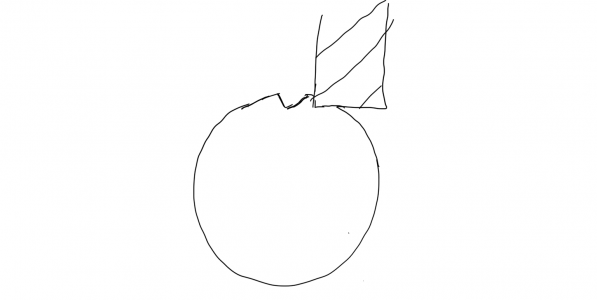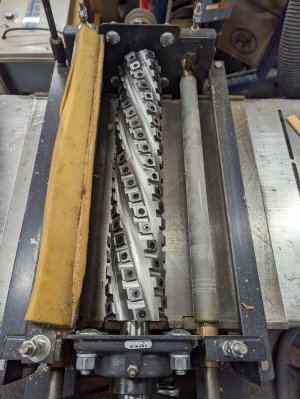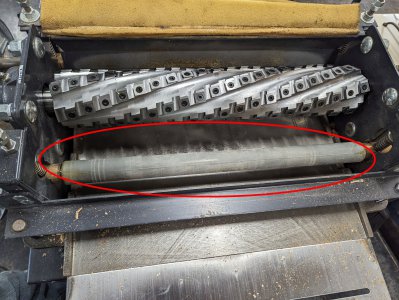How about cutting really coarse threads on the roller? Not very deep and start several threads at different locations around the diameter. You could even run left hand threads the same way. End effect should be something like a coarse knurl. Add as many threads and make them as deep as you need.
Look up multi-start threading to see how it is done
Look up multi-start threading to see how it is done




